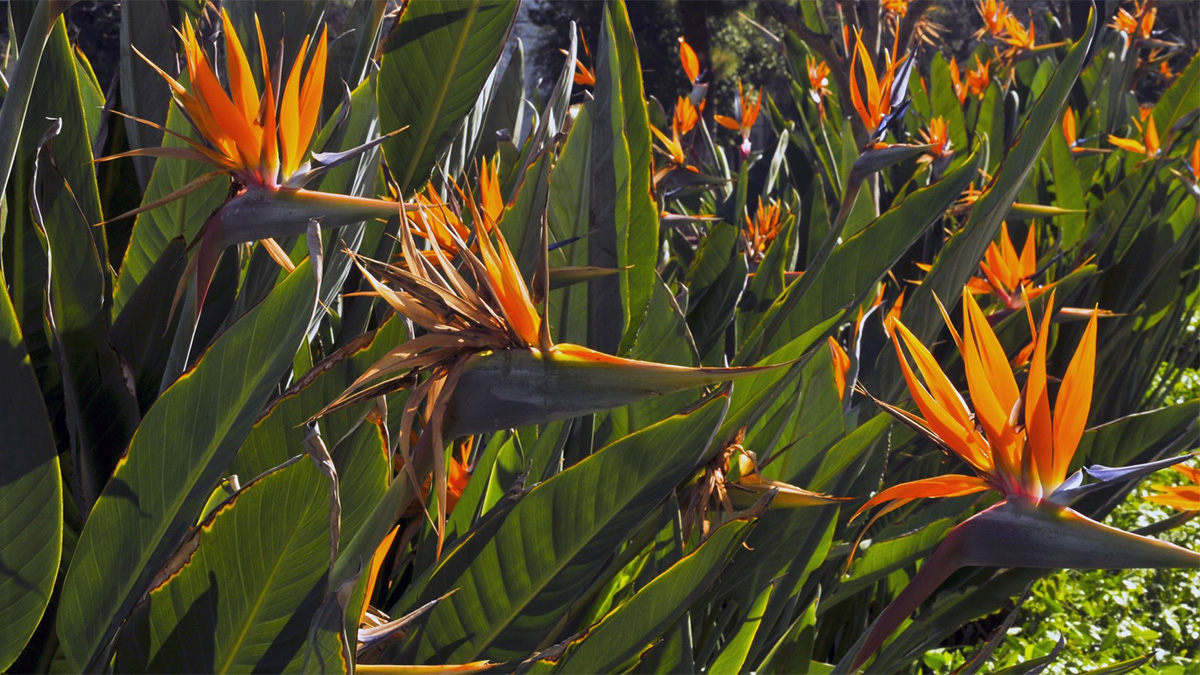Tips for Growing a Healthy Bird of Paradise Plant

The bird of paradise is a stunning tropical plant that instantly transforms any space with its bold leaves and dramatic flowers. While it can seem intimidating to grow, giving it the right care helps this show-stopping plant thrive. Follow these practical tips to help your bird of paradise look its best, whether indoors or in the garden.
Understanding bird of paradise
Bird of paradise plants, known botanically as Strelitzia reginae or Strelitzia nicolai, are celebrated for their striking, tropical look. Their large banana-like leaves and bright, bird-shaped blooms add an exotic touch to gardens and indoor spaces. Whether grown inside or outdoors, they bring a dramatic presence that stands out among other plants.
Indoor bird of paradise plants can thrive if they have enough space and light. Outdoors, they do best in mild climates that stay above freezing. Understanding their natural environment helps you recreate the conditions they love.
Choosing the right location
Bird of paradise plants crave plenty of bright, indirect light. A spot near a large south or west-facing window works well indoors, while outdoor plants appreciate morning sun with some afternoon shade.
Temperature is another factor to consider since these plants dislike cold drafts or sudden chills. They grow best in steady, warm conditions between 65 and 80 degrees Fahrenheit. If grown indoors, be sure to give them enough space to stretch their broad leaves.
Soil and potting needs
These tropical beauties prefer well-draining soil that holds some moisture without getting soggy. A blend of potting soil with added perlite or coarse sand supports both drainage and root development.
Choose a sturdy pot with drainage holes and enough room for the plant’s strong root system. Repotting every two to three years helps refresh the soil and gives the roots more space. Avoid containers that trap water at the bottom since bird of paradise roots are prone to rot.
Watering your bird of paradise
Water thoroughly when the top two inches of soil feel dry. Let the water drain freely and empty any saucers to keep roots from sitting in moisture.
In winter, reduce watering since the plant’s growth slows with cooler temperatures. Check for signs of overwatering, like mushy stems or brown spots, which can signal root problems.
Consistency is key, so try to keep the soil evenly moist without allowing it to become waterlogged.
Feeding and fertilizing
Bird of paradise plants are moderate feeders and benefit from a balanced liquid fertilizer during the active growing months of spring and summer. Apply fertilizer every four to six weeks to promote healthy foliage and potential blooms.
Choose a fertilizer with micronutrients to support strong roots and leaf development. During fall and winter, stop feeding, as the plant enters a slower growth phase.
Be careful not to over-fertilize, which can cause salt buildup and damage tender roots.
Pruning and general maintenance
Remove dead or damaged leaves to encourage fresh growth and keep the plant looking neat. Prune with clean, sharp shears to prevent introducing disease.
Wipe the broad leaves with a damp cloth occasionally to remove dust, which helps the plant photosynthesize better and discourages pests.
If you notice the plant leaning, rotate the container every few weeks so it grows evenly and maintains an upright form.
Encouraging flowering
Bird of paradise plants are famous for their spectacular blooms, but they can take years to flower. Consistent bright light and a stable temperature are essential to encourage flowering.
A mature plant, usually four to five years old, is most likely to produce blooms. Outdoors, they may flower more reliably than houseplants since they receive higher light levels.
Give your plant time and patience, as healthy leaves are the first sign that it is on the right track.
Troubleshooting common problems
Yellow leaves often point to overwatering or poor drainage, while brown leaf tips might signal low humidity or underwatering. Adjust your care routine if you see these warning signs.
Watch out for spider mites, scale insects, or mealybugs, especially on indoor plants. Wipe them off with a damp cloth or treat with insecticidal soap if needed.
If your bird of paradise seems slow to grow, check that it has enough light and is not rootbound. Repotting or moving it to a sunnier spot can make a big difference.
Conclusion
Caring for a bird of paradise is well worth the effort when you see those striking leaves and exotic blooms. With the right light, watering, and a little attention, you can enjoy a healthy, vibrant plant that brings a taste of the tropics to your home or garden. Stick to these simple tips and let your bird of paradise shine.
